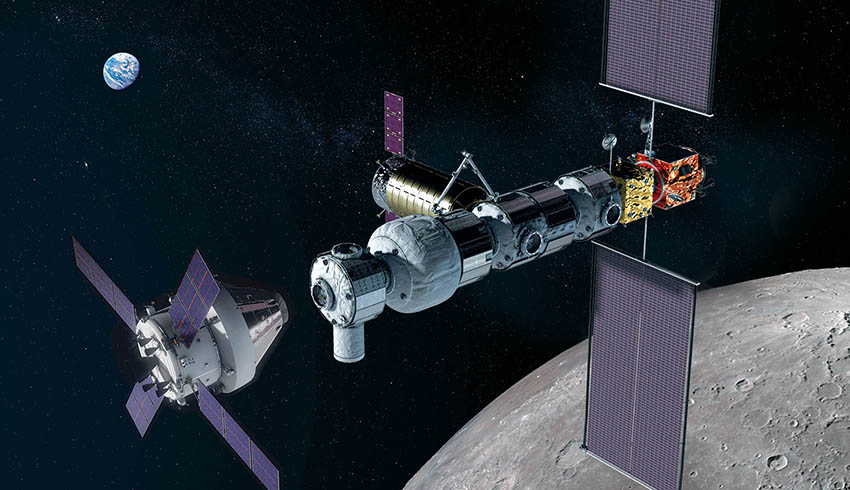A new study by the European Space Agency (ESA) said that Gateway could be the deployment point for planetary defence missions, to intercept asteroids approaching dangerously close to Earth.
ESA concedes this sounds a bit like science fiction – Earth-bound asteroids are a staple of some blockbuster movies.
But asteroids have hit Earth in the past with devastating consequences, and even a small impact could obliterate a city.
So, the Earth’s first planetary defence missions are already in active preparation.
NASA’s Double Asteroid Redirect Test (DART) spacecraft, is due to launch next year to impact on the smaller of the Didymos asteroid pair, in orbit between Earth and Mars.
Neither pose a threat to Earth and the impact is designed to assess whether its orbit can be shifted by a high-speed impact.
In 2026, ESA’s Hera spacecraft will perform a close-up survey of the asteroid post-impact. The two missions are jointly called the Asteroid Impact and Deflection Assessment (AIDA).
“Once proven, the deflection technique could be used for real on asteroids coming dangerously close – but a rapid reaction time would be crucial for maximum effectiveness,” ESA said.
That’s where Gateway comes in. Gateway is intended to serve as a staging post for robotic and crewed missions to the moon and is being developed by the same partners as the International Space Station – NASA, ESA, and the Japanese, Russian and Canadian space agencies.
It’s intended that a minimal Gateway, comprising accommodation and support modules, will be in place for the Artemis mission to return to the moon in 2024. Other modules will be progressively added on.
ESA is now funding a new study by Politecnico di Milano to analyse options for using the Gateway to park planetary defence spacecraft in readiness to intercept incoming asteroids.
These spacecraft would be able to depart the Gateway with much lower energies compared with departing from Earth itself.
“This promising study comes out of one of the latest ideas received through ESA’s Open Space Innovation Platform (OSIP),” said Moritz Fontaine, ESA discovery and preparation officer.
“Using OSIP, anyone is welcome to propose novel ideas to address space-related challenges.
“We channel the most promising ideas through appropriate ESA implementation paths. Ideas can come from anyone: specialist researchers, companies or members of the public. Although OSIP was launched less than a year ago, we have already received hundreds of proposals.”

